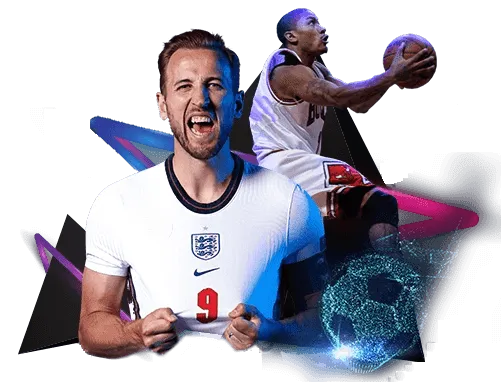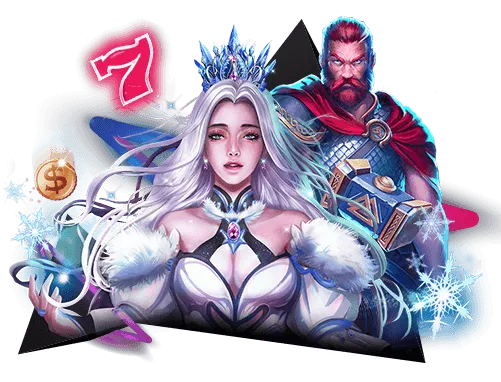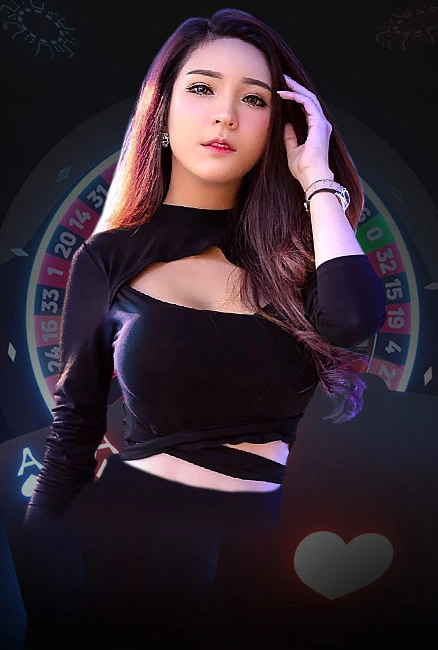-
Sports

Sports
- Slots
- Live Casino
-
Cock Fighting

Cock Fighting
- Promotion
- Rewards
- Achievements


Slot machines generally have three or more “reels,” each of which has a number of symbols. While physical slot machines may have 20 or more symbols per reel, digital technology allows them to have many more—some have 256 virtual symbols—with millions of possible combinations. The combinations of symbols that pay out if you bet on them are called “paylines.”
Slot machines contain random number generators that can generate thousands of numbers per second, each of which is associated with a different combination of symbols. Whether you win or lose is determined by the random number generated in the exact instant you activate each play—if it matches a payline, you win. Since each spin is independent, random and unrelated to previous or future spins, it’s impossible to predict what will happen on each play.
There are many different kinds of slot machines. Some allow you to choose how many paylines to bet on per play, and how much you want to bet. Before you put your money in, figure out the cost per play, the odds, the paylines, the return to player, and anything else that will help you make the right decisions for you. Look for pay tables on or near the machine that explain everything you need to know.

Online casino Malaysia is a website or platform offering various gambling and casino games to its visitors in Malaysia. Players can wager real money on games such as slots, poker, blackjack, roulette, baccarat and others from the comfort of their own homes or mobile devices. Notably, the legal status of online casinos in Malaysia can be complex. While there may be casinos catering to Malaysian players, their government actively attempts to regulate and restrict online gambling activities. Players should exercise caution and only use licensed and reputable online casinos so as to avoid potential legal complications.
As the world increasingly turns to online entertainment, online casinos continue to rise in popularity. In Malaysia, a trusted online casino is highly valued to ensure a safe and fair gambling experience. In 2024, online casino Malaysia 2024 MB5 promises to be one of the top trusted online casinos in Malaysia.
Malaysia has a plethora of online casinos available, but which ones are the best? The top online casinos in Malaysia stand out for their trustworthiness, safety, and reliability. These casinos provide a wide range of games, including popular slot games, blackjack, roulette, and more. They also offer lucrative promotions, making the online gambling experience even more exciting.
To access these top online casinos, it is essential to login to a trusted online casino Malaysia. One of the most trusted online casinos in Malaysia is mb5casino. This casino offers a secure and user-friendly platform, with a variety of games and promotions to choose from. To login, simply visit their website, register as a new member, and access their games. It's that easy!
Casino game offerings vary between online casinos in Malaysia; however, generally speaking you'll find a wide selection of games tailored to different preferences. Here are some popular types of casino games you can found at trusted online casino Malaysia MB5Casino.
Online live casino in Malaysia provide players with interactive and immersive casino experiences by streaming real dealers directly from a casino studio or physical casino studio onto your computer or mobile device. Players can engage with these dealers while also engaging with other players through popular table games available at these platforms. Here are some common live dealer games you may find at online live casino in Malaysia.
Online roulette games are an immensely popular form of casino entertainment that you can access across numerous casino platforms. These digital versions replicate the classic roulette wheel and table that are found at traditional land-based casinos. Online casino in Malaysia provide different variants of roulette, such as European, American and French as well as more unique variations with special features like lightning roulette. Select your favourite table from among those available; once selected you'll be taken through to a virtual betting layout where you can place bets on specific numbers, groups of numbers, colors (red or black), odd/even numbers as well as other options dependent upon which variant is being played. Betting options will differ depending upon which variant is in play.
Not to be forgotten is that different roulette variants have slight rule differences. European and American versions both feature one zero pocket while French roulette often includes special "en prison" and "la partage" rules that may benefit players.
Blackjack (often known by its nickname 21) is a card game in which the objective is to defeat the dealer by having a hand value closest to 21, without exceeding it. Trusted online casino Malaysia frequently provide various blackjack variants; popular choices include Classic, European and American. Your and the dealer will each be dealt two cards; usually both your cards will be visible, while in most blackjack games one of theirs (their "upcard") will remain face up while one (their "hole card") remains face down.
Based on your two initial cards and the dealer's upcard, there are multiple choices open to you:
Once you make your decisions, the dealer will reveal his/her hole card and must abide by specific rules regarding hitting or standing, depending on the game variant. A player with a hand value closest to 21 without exceeding it wins - busting means forfeiting your bet; a tie counts as a push (a tie) where both hands receive equal returns; winning hands are typically paid out 1:1; however blackjack (Ace and 10-value card) usually pays 3:2.
Baccarat is a beloved casino classic known for its elegance and simplicity, often associated with high-stakes gambling. At MB5 Malaysia Online Casino you can experience various variants of this timeless game like Punto Banco (the most commonly played variant), Mini Baccarat, Chemin de Fer, etc. Each variant comes equipped with its own set of rules and features that give it its unique edge. This malaysia online casino game offers three betting options in baccarat: Player (Punto), Banker (Banco), and Tie. Bettors may place their stake on either player hand, banker hand, or on any ties between them. Online baccarat usually deals two hands - one for player and another for banker--with two cards being given face up to each hand for deal and value calculation as follows:
Cards 2 through 9 are valued at their face value, while 10s, queens and jacks (King, Queen and Jack) and Aces are worth one point each.
Hands with total point values closest to 9 are usually declared the winner. If their point total exceeds 9, only its last digit is taken into consideration (e.g. a hand consisting of 7 and 6 counts as three points). Under certain real casino online malaysia rules based on initial two cards' total point values, a third card may also be drawn at random from among available options.
Online slots are a popular form of casino game that you can play on various online gambling real money platforms, including those available to players in Malaysia. These digital slot machines offer a wide range of themes, features, and payouts to cater to different player preferences. Here's some of slot game online you can play with MB5 casino. Mobile slot games mega888, 918kiss, pussy888, club suncity 2, xe88, joker123, evoplay, play'n go, microgaming, playtech and pragmatic play available for you every day.
In this section, we will explore the world of premier online slots games in Malaysia. These games offer an immersive and realistic casino experience, complete with advanced features and engaging themes that captivate players.
Mobile slots are also available, making gaming on-the-go both convenient and accessible. Popular online platforms offer a wide variety of slot games to choose from, including classic and modern versions, each with unique and exciting features.
As players indulge in the thrill of online slots games, it is crucial to choose a trusted online platform to ensure a safe and fair gaming environment. Trusted online platforms provide secure financial transactions, fair gameplay, and credible customer service, ensuring the best possible player experience.
Sports betting is a form of gambling in which participants attempt to predict the outcomes of sporting events and place bets on them, often with great success. Millions of people worldwide engage in this popular pastime.
Sports betting involves individuals, known as bettors or punters, placing a sum of money known as a bet or stake on one or multiple outcomes of a sporting event. Betting on casino online malaysia covers many popular sporting events like soccer (football), basketball, American football, tennis and baseball - as well as less mainstream ones such as horse racing, boxing golf or political elections or entertainment awards.
Sportsbooks - whether physical locations or online platforms - offer various betting markets for betting on events. Common betting markets include game winners, point spreads, over/under totals, player prop bets and more. Odds are used to estimate the potential payout from winning bets. Bookmakers use odds as an estimation of how likely certain events or outcomes are, which may come in fractional, decimal or moneyline forms.
Sports betting can add excitement and enjoyment to watching sporting events, but it must be undertaken responsibly with full understanding of both risks and rewards involved on malaysia online casino.
Online casinos in Malaysia offer a wide range of lucrative promotions and exciting games to attract and retain players. These promotions provide great value and give players more opportunities to win. Here are some of the top promotions and games offered by online casino Malaysia:
| Promotions | Description |
|---|---|
| Sign-up Bonus | New players can receive a bonus upon registration, usually in the form of free spins or a deposit match. |
| Reload Bonus | Existing players can receive a bonus for making a deposit on a certain day or week. |
| Cashback | Players can receive a percentage of their losses back as cashback. |
When it comes to games, online casinos in Malaysia offer a wide selection of options that cater to all types of players. One of the most popular games is Mega888, a slot game with a fun and engaging theme. Other popular casino games Malaysia include:
With so many great promotions and games to choose from, online casinos in Malaysia provide a truly immersive and rewarding experience for all players.
Online casinos in Malaysia like mb5casino offer a fantastic live casino experience with real-life dealers. The games are held in an authentic casino setting, where players can interact with dealers and other players in real-time. So, whether you prefer classic games like blackjack or roulette, or modern ones like live baccarat or poker, you can enjoy them live with friendly, professional dealers.
Moreover, online casinos in Malaysia have optimized their games for mobile devices, making it possible for players to enjoy their favorite games on the go. These mobile casinos offer the same fantastic gameplay experience as the desktop versions, with many games optimized for mobile devices. Whether you're an iOS or Android user, you can access the site through mobile browsers and enjoy a seamless gaming experience.
| Benefits of Live Dealers & Mobile Experience | Explanation |
|---|---|
| Real-Life Casino Atmosphere | Enjoy live casino games with real-life dealers, giving you an authentic casino experience from the comfort of your own home. |
| Interact with Professional Dealers | Engage with friendly and professional dealers, who are trained to provide excellent customer service while focusing on fair gameplay. |
| Play Games Anytime, Anywhere | Access online casino games on your mobile device, allowing you to play your favorite games on the go or from the comfort of your own home. |
| Optimized for Mobile Devices | Online casinos in Malaysia are optimized for mobile devices, ensuring that the games run smoothly and provide a fantastic gameplay experience. |
| Wide Selection of Games | Enjoy a wide variety of games, including online slots Malaysia, poker, baccarat, and more, all available on your mobile device. |
If you're looking to enjoy the thrill of online gambling in Malaysia, you can take advantage of the live dealers and mobile experience offered by trusted online casino Malaysia. Try your luck with Malaysia online slots or other popular games, and experience the excitement of playing in a real-life casino from anywhere, anytime.
In conclusion, online gambling in Malaysia is a thriving industry, with trusted online casinos offering a wide range of games and promotions to players. One of the most popular options is slot Malaysia online, which provides an exciting and engaging experience for players of all levels. With the availability of live dealers and strong mobile compatibility, playing at a trusted online casino Malaysia is both convenient and enjoyable. Whether you are a seasoned gambler or a newcomer to the world of online casinos, there is something for everyone in Malaysia's thriving online gambling scene.
Malaysia generally views online gambling as illegal under their Betting Act 1953 and Common Gaming Houses Act 1953 laws which make most forms of gambling unlawful - including online casino Malaysia, although this only applies if hosted locally; as there is no jurisdiction for foreign-hosted websites in Malaysia.
Play with MB5 here and experience live casino and online slot gaming any time, anyplace and from any device imaginable! Test your luck at roulette, classic card games and a range of top slot games just like those found at Genting Casino!
Yes, online casino gaming is safe if you choose one of the reputable providers with licenses from trusted authorities.
Signing up at our top online casino Malaysia and providing us with your details allows you to access free credit via customer services and take advantage of a 100% welcome bonus, along with other exciting awards such as free spins for online slots or deposit cashback. Once registered at our casino Malaysia, claim your free credit. Plus get our amazing welcome bonuses. As you play more, more rewards become available including free spins on slots games or even deposit cashback - it really pays to gamble more with us!
An online casino is a virtual platform that allows players to gamble and wager on casino games through the internet. It provides a digital alternative to traditional brick-and-mortar casinos, allowing players to access a wide range of casino games and promotions from the comfort of their own homes.
Yes, there are trusted online casinos in Malaysia. It is important to choose a reputable and licensed online casino that ensures fair play and secure transactions. Look for online casinos that are regulated by recognized authorities and have positive reviews from other players.
Yes, you can win real money at online casinos in Malaysia. These casinos offer a variety of real money games, including slots, table games, and live dealer games. By wagering with real money and playing skillfully, you have the chance to win cash prizes and jackpots.
To choose the best online casino in Malaysia, consider factors such as licensing and regulation, game variety, customer support, payment options, and promotions. Look for casinos that offer a wide range of games, convenient banking methods, and attractive bonuses to enhance your overall gaming experience.
Yes, many online casinos in Malaysia are compatible with mobile devices. These casinos have developed mobile-friendly platforms or dedicated mobile apps that allow players to access their favorite casino games on smartphones and tablets. This provides flexibility and convenience for players who prefer gaming on the go.
Online casinos in Malaysia offer various promotions to attract and reward players. These promotions may include welcome bonuses, deposit match bonuses, free spins, cashback offers, and loyalty programs. Be sure to check the promotions page of the online casino for the latest offers and terms and conditions.
Yes, many online casinos in Malaysia offer live dealer games. These games feature real-life dealers who interact with players through live video streaming. Players can engage in live blackjack, roulette, baccarat, and other casino games, providing an immersive and engaging gaming experience.
Yes, online slots are popular in Malaysia. They are easy to play and offer a wide variety of themes and features. Many online casinos in Malaysia feature a vast collection of slot games, including classic slots, video slots, and progressive jackpot slots, catering to the preferences of different players.